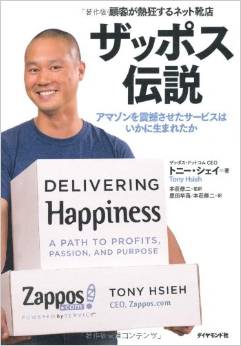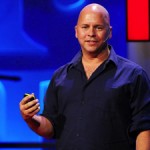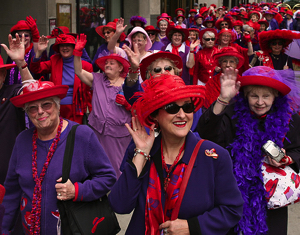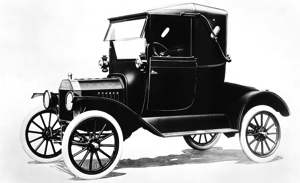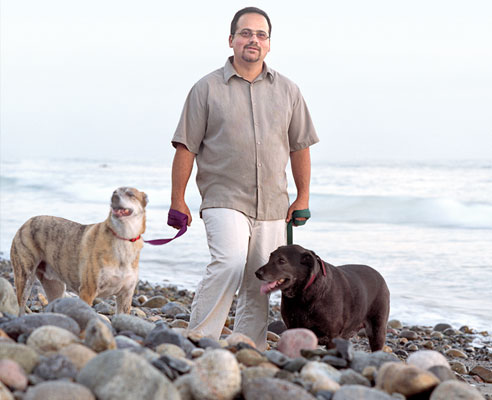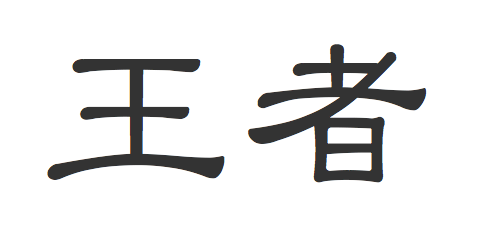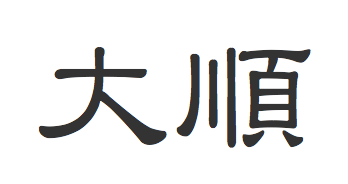[audio:http://akioiwai.com/wp-content/uploads/2015/02/Seth-Godin-No7-201.mp3]
No.07
So Tony Hsieh does not run a shoe store. Zappos isn’t a shoe store. Zappos is the one, the only, the best-there-ever-was place for people who are into shoes to find each other, to talk about their passion, to connect with people who care more about customer service than making a nickel tomorrow. It can be something as prosaic as shoes, and something as complicated as overthrowing a government. It’s exactly the same behavior though.
What it requires, as Geraldine Carter has discovered, is to be able to say, “I can’t do this by myself. But if I can get other people to join my Climate Ride, then together we can get something that we all want. We’re just waiting for someone to lead us.”
Michelle Kaufman has pioneered new ways of thinking about environmental architecture. She doesn’t do it by quietly building one house at a time. She does it by telling a story to people who want to hear it. By connecting a tribe of people who are desperate to be connected to each other. By leading a movement and making change. And around and around and around it goes.
So three questions I’d offer you. The first one is, who exactly are you upsetting? Because if you’re not upsetting anyone, you’re not changing the status quo. The second question is, who are you connecting? Because for a lot of people, that’s what they’re in it for: the connections that are being made, one to the other. And the third one is, who are you leading? Because focusing on that part of it — not the mechanics of what you’re building, but the who, and the leading part — is where change comes.
So Blake, at Tom’s Shoes, had a very simple idea. “What would happen if every time someone bought a pair of these shoes I gave exactly the same pair to someone who doesn’t even own a pair of shoes? “This is not the story of how you get shelf space at Neiman Marcus. It’s a story of a product that tells a story. And as you walk around with this remarkable pair of shoes and someone says, “What are those?” You get to tell the story on Blake’s behalf, on behalf of the people who got the shoes. And suddenly it’s not one pair of shoes or 100 pairs of shoes. It’s tens of thousands of pairs of shoes.
ボキャブラリー
So Tony Hsieh does not run a shoe store. Zappos isn’t a shoe store. Zappos is the one, the only, the best-there-ever-was place for people who are into shoes to find each other, to talk about their passion, to connect with people who care more about customer service than making a nickel tomorrow. It can be something as prosaic as shoes, and something as complicated as overthrowing a government. It’s exactly the same behavior though.
What it requires, as Geraldine Carter has discovered, is to be able to say, “I can’t do this by myself. But if I can get other people to join my Climate Ride, then together we can get something that we all want. We’re just waiting for someone to lead us.”
Michelle Kaufman has pioneered new ways of thinking about environmental architecture. She doesn’t do it by quietly building one house at a time. She does it by telling a story to people who want to hear it. By connecting a tribe of people who are desperate to be connected to each other. By leading a movement and making change. And around and around and around it goes.
So three questions I’d offer you. The first one is, who exactly are you upsetting? Because if you’re not upsetting anyone, you’re not changing the status quo. The second question is, who are you connecting? Because for a lot of people, that’s what they’re in it for: the connections that are being made, one to the other. And the third one is, who are you leading? Because focusing on that part of it — not the mechanics of what you’re building, but the who, and the leading part — is where change comes.
So Blake, at Tom’s Shoes, had a very simple idea. “What would happen if every time someone bought a pair of these shoes I gave exactly the same pair to someone who doesn’t even own a pair of shoes? “This is not the story of how you get shelf space at Neiman Marcus. It’s a story of a product that tells a story. And as you walk around with this remarkable pair of shoes and someone says, “What are those?” You get to tell the story on Blake’s behalf, on behalf of the people who got the shoes. And suddenly it’s not one pair of shoes or 100 pairs of shoes. It’s tens of thousands of pairs of shoes.
Tony Hsieh: トニー・シェイ。ザッポス・ドットコムの創業者
run: vt. 〜を運営[経営・管理]する
Zappos: ザッポス・ドットコム。ヘンダーソン(米ネバダ州)に本拠を構える靴を中心としたアパレル関連の通販サイト
the-best-there-ever-was: かつてあった最も良い
into: (be into ~で)〜が好きだ、〜を好む
prosaic: a. 平凡な、単調な、退屈な;想像力に欠ける、つまらない;散文的な
complicated: a. 複雑な、入り組んだ、分かりにくい
overthrow: vt. (政府・指導者)を倒す、崩壊させる、転覆させる
behavior: n. 行動、行儀、挙動;態度;習性
Geraldine Carter: ジェラルディン・カーター。Climate Rideの創設者
Climate Ride: 非営利非課税組織(501c organization)で、イベントへの参加を通して持続可能性や環境運動に対する認識と支持を高めることを目的としている団体。
Michelle Kaufman: ミッシェル・カウフマン。地球に優しいデザインを専門とする建築家およびデザイナー。
pioneer: vt. 〜を開拓する、切り開く;(新しいことなどを)始める、創始する;〜を率先してやる
environmental architecture: 環境建築
be desperate to ~: a. 〜したくてたまらない
go around: 広まる、蔓延する;行き渡る、流行する
offer: vt. 〜を差し出す、提供する
upset: vt. 〔秩序や機能を〕乱す、壊す、駄目にする;動揺させる、困らせる;ひっくり返す、転覆させる
Blake: ブレイク・マイコスキー(Blake Mycoskie)のこと。トムズシューズの創立者。
Tom’s Shoes: 一足の靴が購入されるごとに、靴を必要としている世界の子供たちに新しい靴を贈ることをしている靴メーカー。
Neiman Mrcus: ニーマン・マーカス。アメリカ合衆国で店舗を展開している、ニーマン・マーカス·グループによって運営されているチェーンデパートメントストア。
remarkable: a. 驚くべき、珍しい、並外れた;優れた、卓越した
on one’s behalf: 〜のために、〜の利益になるように
on behalf of ~: 〜のために、〜の利益になるように;〜の代わりに、〜の代理に、〜を代表して
解説
Tony Hsiehトニー・シェイ

台湾系アメリカ人で、小さい頃から何度も起業。ハーバード大学でコンピュータ・サイエンスを学び、オラクルに入社。オラクル在職時に共同創業したインターネット広告ネットワーク会社のリンクエクスチェンジを、1999年にマイクロソフトに2億6500万ドルで売却(当時24歳)。同年、ザッポス創業に投資家として関わり、やがてCEOとしてほぼゼロから売上高約一〇億ドルを超える企業にまで成長させた。米ブランドウィーク誌で「マーケッター・オブ・ザ・イヤー2010」。
『顧客が熱狂するネット靴店 ザッポス伝説―アマゾンを震撼させたサービスはいかに生まれたか』
ザッポス・ドットコム
http://www.zappos.com/
アメリカとカナダで靴や衣料、アクセサリーなどを販売するネット企業で、靴のオンライン小売でアメリカ最大。1999年にトニー・シェイらの出資を受けて創業され、2009年11月に12億ドルの評価額でアマゾン・ドットコムによって買収される。同社は、みずからを、「靴を売ることになった顧客サービス企業」と称し、カスタマー・サービスを大切にすることで知られる。
Geraldine Carter: ジェラルディン・カーター
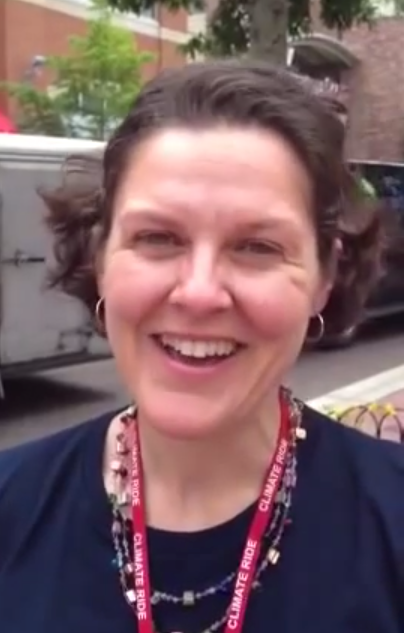
http://www.climateride.org/
https://www.peertopeerforum.com/geraldine-carter/
Climate Ride

Michelle Kaufman ミッシェル・カウフマン
Blake Mycoskie ブレイク・マイコスキー
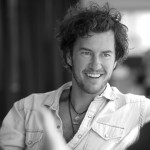
トムズ・シューズ
http://www.toms.com/
http://ssl-tomsshoes.jp/
